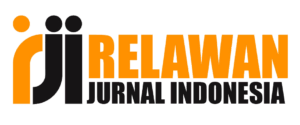Sales Prediction of Unilever Products Using The Linear Regression Method
Abstract
Barokah Shop is a retail store that sells various basic necessities for daily needs. Too much inventory will result in losses such as storage costs and the possibility of a decrease in the quality of goods. On the other hand, a small amount of inventory will reduce a larger profit. This study aims to build a web-based Unilever sales prediction system using a simple linear regression method. Testing the accuracy of the prediction results of sales of Unilever products using MEA and MAPE to see the level of error in the prediction results. The dataset uses Unilever product sales data for 15 months, from January 2021 to March 2022. The dataset is divided into 12 months as training data and 3 months as testing data. Prediction results in the next 3 periods of each type of product produce the same value between the system results and the results of manual linear regression calculations. Testing the error rate on the prediction results for 3 periods, namely January to March 2022, each Ax Deodorant, Bango Kecap, Buavita, Citra Lotion, Citra Soap, Clear Shampoo, Sariwangi, Sunsilk Conditioner, Vixal and Wall's Ice Cream products belong to the category of very accurate forecasting results. With the smallest MAPE value in Sunsilk Conditioner products of 1%. Thus, the linear regression method is very accurate for predicting sales of Unilever types goods.
References
[2] H. Hairani, A. Anggrawan, and M. A. Candra, “Prediction of Electricity Usage with Back-propagation Neural Network,” International Journal of Engineering and Computer Science Applications (IJECSA), vol. 1, no. 1, pp. 9–18, 2022, doi: 10.30812/ijecsa.v1i1.1722.
[3] A. U. Khasanah and H. Harwati, “Educational data mining techniques approach to predict student’s performance,” International Journal of Information and Education Technology, vol. 9, no. 2, pp. 115–118, 2019, doi: 10.18178/ijiet.2019.9.2.1184.
[4] H. Hairani, N. A. Setiawan, and T. B. Adji, “Metode Klasifikasi Data Mining dan Teknik Sampling SMOTE Menangani Class Imbalance Untuk Segmentasi Customer Pada Industri Perbankan,” in Prosiding SNST Fakultas Teknik, 2016, vol. 1, no. 1, pp. 168–172, doi: 978-602-99334-5-1.
[5] D. Kurniawan, A. Anggrawan, and H. Hairani, “Graduation Prediction System On Students Using C4.5 Algorithm,” MATRIK : Jurnal Manajemen, Teknik Informatika dan Rekayasa Komputer, vol. 19, no. 2, pp. 358–365, 2020, doi: 10.30812/matrik.v19i2.685.
[6] H. Hairani, D. Susilowati, I. Puji Lestari, K. Marzuki, and L. Z. A. Mardedi, “Segmentasi Lokasi Promosi Penerimaan Mahasiswa Baru Menggunakan Metode RFM dan K-Means Clustering,” MATRIK : Jurnal Manajemen, Teknik Informatika dan Rekayasa Komputer, vol. 21, no. 2, pp. 275–282, 2022, doi: 10.30812/matrik.v21i2.1542.
[7] M. Madani, L. Ganda, R. Putra, and L. N. Azmi, “Deteksi Kegawatan Pasien Covid-19 Berbasis Android Menggunakan Algoritma C45,” Jurnal Bumigora Information Technology (BITe), vol. 4, no. 2, pp. 27–36, 2022, doi: 10.30812/bite.v4i1.1772.
[8] G. S. Nugraha and H. Hairani, “Aplikasi Pemetaan Kualitas Pendidikan di Indonesia Menggunakan Metode K-Means,” MATRIK: Jurnal Manajemen, Teknik Informatika dan Rekayasa Komputer, vol. 17, no. 2, pp. 13–23, 2018.
[9] Harsiti, Z. Muttaqin, and E. Srihartini, “Penerapan Metode Regresi Linier Sederhana Untuk Prediksi Persediaan Obat Jenis Tablet,” JSiI (Jurnal Sistem Informasi), vol. 9, no. 1, pp. 12–16, 2022, doi: 10.30656/jsii.v9i1.4426.
[10] G. N. Ayuni and D. Fitrianah, “Penerapan metode Regresi Linear untuk prediksi penjualan properti pada PT XYZ,” Jurnal Telematika, vol. 14, no. 2, pp. 79–86, 2019.
[11] E. M. Priliani, A. T. Putra, and M. A. Muslim, “Forecasting Inflation Rate Using Support Vector Regression (SVR) Based Weight Attribute Particle Swarm Optimization (WAPSO),” Scientific Journal of Informatics, vol. 5, no. 2, pp. 118–127, 2018, doi: 10.15294/sji.v5i2.14613.
[12] A. Navian, Daryanto, and H. Oktavianto, “Prediksi Persediaan Obat Dengan Metode Regresi Linier,” 2018.
[13] M. I. A. Imran, “Pengaruh Kepuasan Pelanggan Terhadap Minat Beli Ulang Makanan Di Rumah Makan Ayam Bakar Wong Solo Alauddin Kota Makassar,” Jurnal Ilmu Manajemen Profitability, vol. 2, no. 1, pp. 50–64, 2018.
[14] D. T. Larose, Data mining and predictive analytics. John Wiley & Sons, 2015.
[15] D. Maulud and A. M. Abdulazeez, “A Review on Linear Regression Comprehensive in Machine Learning,” Journal of Applied Science and Technology Trends, vol. 1, no. 4, pp. 140–147, 2020, doi: 10.38094/jastt1457.
[16] D. C. Montgomery, C. L. Jennings, and M. Kulahci, Introduction to time series analysis and forecasting. John Wiley & Sons, 2015.
[17] R. T. Amira Herwindayani H., Wiwik Anggraeni, “Pembuatan Aplikasi Pendukung Keputusan Untuk Peramalan Persediaan Bahan Baku Produksi Plastik Blowing dan Inject Menggunakan Metode ARIMA (Autoregressive Integrated Moving Average) Di CV. Asia,” Jurnal Teknik POMITS, vol. 3, no. 2, pp. 169–179, 2014.

This work is licensed under a Creative Commons Attribution 4.0 International License.











